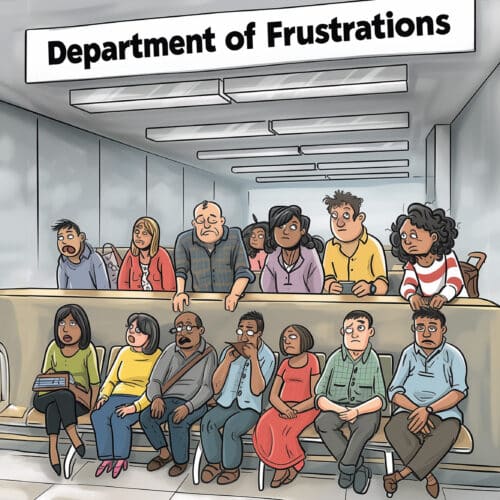“Mindfulness is not just some esoteric practice; it’s a practical tool. Skeptics might see it as airy-fairy, but once they understand the real, tangible benefits it brings to focus, stress reduction, and self-awareness, they often become the most dedicated practitioners.”
– Jeff Warren, meditation teacher and mindfulness expert
In the high-speed, high-stress environment of modern workplaces, especially in the United States, professionals are increasingly encountering challenges that impact their health and productivity. Reports suggest escalating rates of burnout, stress-related illnesses, and a general decline in work-life balance. A staggering 77% of professionals have experienced burnout at their current job, with workload being the top reason cited (Gallup, 2021). According to the American Psychological Association, “Workplace burnout is an occupation-related syndrome resulting from chronic workplace stress that has not been successfully managed…[and] it can be measured and validated with scientific tools.” (“Employers need to focus on workplace burnout: Here’s why” – May 2023). This isn’t about just normal day-to-day irritations that we all must navigate. The impacts of real burnout are severe for the individual, their team, and their organization’s bottom line. According to the foregoing study, among the many negative outcomes of burnout are the following:
The Results of Burnout
Organizational
- Absenteeism
- Job dissatisfaction
- Presenteeism
Psychological
- Depression
- Insomnia
- Psychological distress
Physical
- Heart disease
- Headaches
- Musculoskeletal pain
Not surprisingly, the American Psychological Association recommends taking a hard look at the fit between the person and the job, monitoring workloads and surrounding job conditions that are the source of stress. We cover our thoughts on how to do this in our Team Building, Leadership, and Coaching work. But there’s also something each individual can do to lessen the impacts of less than ideal (or really, really awful) circumstances. If your circumstances are really, really awful, we suggest reading on and also polishing up your resume and thinking about maybe getting some coaching to achieve your goals.
“Mindfulness can help anybody, anywhere, at any level to manage the constant intersection of unreasonable expectations and limited capacity.”
– Terri Stivarius, Executive Coach
Transform your leadership skills with mindfulness.
Explore our coaching services for a more mindful approach to leadership.
Mindfulness: The Modern Antidote to Stress
 Now, more than ever, there’s a pressing need for solutions. Enter mindfulness, a practice that is both ancient and remarkably relevant to our times. It’s about being fully present in the moment, aware of where we are and what we’re doing, without being overly reactive or overwhelmed by what’s going on around us.
Now, more than ever, there’s a pressing need for solutions. Enter mindfulness, a practice that is both ancient and remarkably relevant to our times. It’s about being fully present in the moment, aware of where we are and what we’re doing, without being overly reactive or overwhelmed by what’s going on around us.
Meditation: Not Just for Mystics
Meditation, a key component of mindfulness, often conjures images of serene monks or mystical retreats. But it’s a tool as practical as it is profound. Meditation isn’t dependent on religious beliefs or exotic settings. It can be practiced anywhere, anytime, by anyone. It’s about training your mind to focus and redirect your thoughts, offering a break from the constant noise of the professional world.
A Workplace Scenario: Mindfulness in Action
Imagine you’re in the middle of a heated board meeting. Tensions are high, and you feel your stress levels rising. Instead of reacting impulsively, you take a moment to practice mindfulness. You might not be able to leave the room, but you can still ground yourself. With your eyes open, you focus on your breath, feeling the air move in and out of your lungs, even just for a minute. This simple act can lower your heart rate, bring clarity to your thoughts, and help you respond more calmly and effectively.
Finding Dora – Your ‘Untethered Soul’
“Only thing you have to know is that opening allows energy in and closing blocks it out.”
– Michael Singer, The Untethered Soul
 Michael Singer’s The Untethered Soul is a profound exploration of the journey toward self-realization and the liberation of the mind. Ok, maybe that sounds mystical to some of you. Here’s the deal. Self-realization is not about going on a retreat to Nepal to figure out who you are. That may sound like an amazing trip to some of you, but that’s not what I’m here to talk about. Self-realization is about paying attention to who you really are and what you really want and then going for it with laser focus, confidence, and dedication. And actually getting what you want. You think you want a million dollars. So do I. But why? Why do you want money? What does it give you? The answer to that question is where the money really is. And it turns out, you can’t get what you want without exploring the vast and wondrous spaces of your mind, the voice that keeps talking to you, the emotions that keep sweeping you up. I grew up believing that I was my thoughts and emotions. Nobody ever suggested differently. This is uniquely Western and incredibly misplaced. We should teach our children better than this, but we don’t know how.
Michael Singer’s The Untethered Soul is a profound exploration of the journey toward self-realization and the liberation of the mind. Ok, maybe that sounds mystical to some of you. Here’s the deal. Self-realization is not about going on a retreat to Nepal to figure out who you are. That may sound like an amazing trip to some of you, but that’s not what I’m here to talk about. Self-realization is about paying attention to who you really are and what you really want and then going for it with laser focus, confidence, and dedication. And actually getting what you want. You think you want a million dollars. So do I. But why? Why do you want money? What does it give you? The answer to that question is where the money really is. And it turns out, you can’t get what you want without exploring the vast and wondrous spaces of your mind, the voice that keeps talking to you, the emotions that keep sweeping you up. I grew up believing that I was my thoughts and emotions. Nobody ever suggested differently. This is uniquely Western and incredibly misplaced. We should teach our children better than this, but we don’t know how.
If you fail to turn inward for this journey, and do the work that gets you to really know yourself, what you are and what you are not, that you can in fact manage those emotions and that those thoughts are actually not you, but the voice you choose to listen to…well, you will be just like so many other unhappy humans who live and die seeking external sources of joy and happiness that are never quite enough. This is not about preaching “money can’t buy you love” in the superficial sense that we’ve learned it. Money is absolutely wonderful. By all means go after it. But are you clear on the why and the how? If you aren’t, you may make a lot of money, but you’ll aim way too low for happiness and joy. And you’ll get what you paid for.
Singer’s teachings can be broken down into several key concepts:
- The Voice Inside Your Head: Singer emphasizes the importance of recognizing the inner monologue that constantly plays in our minds. This voice often comments, judges, and creates narratives about our experiences. Understanding that we are not this voice, but the observer of this voice, is crucial for gaining mental clarity and peace.
- Letting Go of Painful Thoughts and Emotions: A major theme in Singer’s work is the idea of letting go. He encourages readers to release painful thoughts and emotions rather than clinging to them. By doing so, we open ourselves to a flow of energy that rejuvenates and heals us.
- The Path to Self-Realization: Self-realization is about discovering who we truly are beyond our thoughts, emotions, and physical experiences. Singer guides readers on a journey of self-discovery, encouraging them to explore the depths of their consciousness.
- Living in the Present Moment: Singer advocates for living in the present moment as a way to experience life fully. He suggests that dwelling on the past or worrying about the future takes away the joy and richness of the current experience.
- The Practice of Non-Resistance: A key teaching in the book is the practice of non-resistance. Singer advises readers to embrace life’s experiences without resistance, whether they are positive or negative. This approach leads to greater inner peace and the ability to navigate life’s challenges with grace.
Ready to bring mindfulness to your workplace?
Learn how our programs can reduce stress and enhance productivity for you and your team.
A Guided Meditation: Observing Your Thoughts
- Find a quiet place where you can sit or stand comfortably.
- Take a deep breath in, then slowly exhale. Feel your body relax with each breath.
- Notice your thoughts. What are you thinking about? Acknowledge these thoughts without judgment.
- Visualize your thoughts as leaves floating down a stream. They are part of you, but they are not you.
- Whenever you find your mind wandering, gently bring your focus back to your breath.
- Continue this for a few minutes, gradually increasing the time as you feel comfortable.
Through this meditation, inspired by Singer’s teachings, you learn to detach from the internal chatter, gaining a clearer, more focused mind. This practice can transform how you navigate workplace challenges, leading to better decision-making, improved relationships, and greater overall well-being.
Mindfulness and meditation are not just techniques; they are pathways to a more balanced, productive, and fulfilling professional life. By adopting these practices, as suggested by Michael Singer, you open yourself up to a world of inner peace amidst external chaos, fostering not only personal well-being but also enhancing your effectiveness as a leader and a professional.
Remember, mindfulness isn’t just a practice; it’s a journey toward discovering the serene core at the heart of your busy life. In the words of Jon Kabat-Zinn, “You can’t stop the waves, but you can learn to surf.” Mindfulness is your surfboard in the dynamic ocean of corporate leadership. Happy surfing!
“My mind is like a bad neighborhood; I try not to go there alone.”
– Ellen DeGeneres
Lead with clarity and focus.
Reach out to explore how mindfulness can transform your career.







